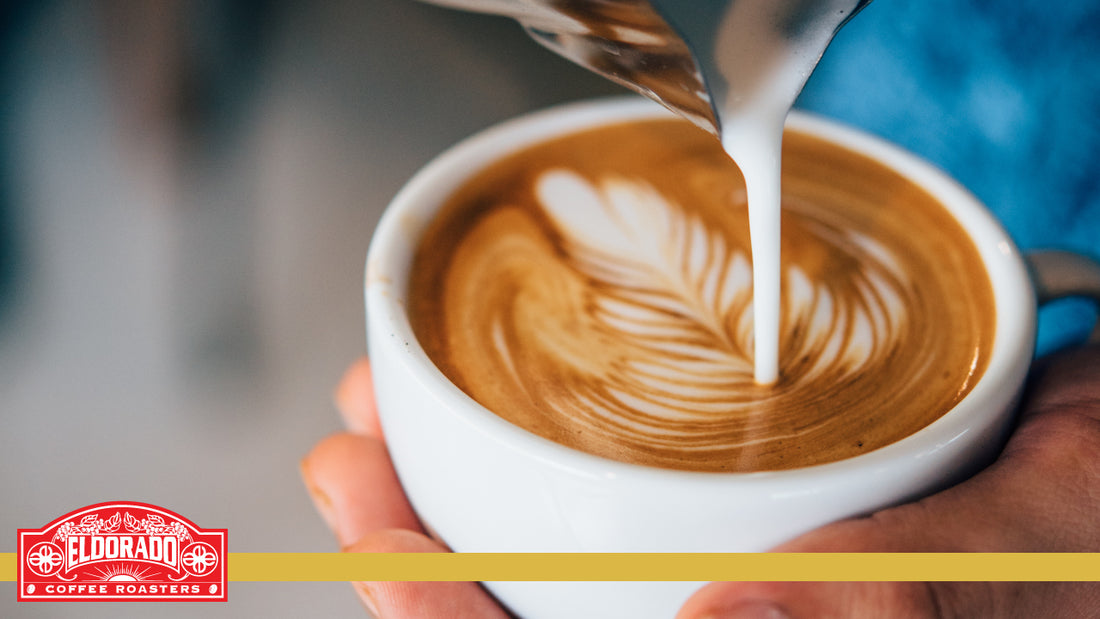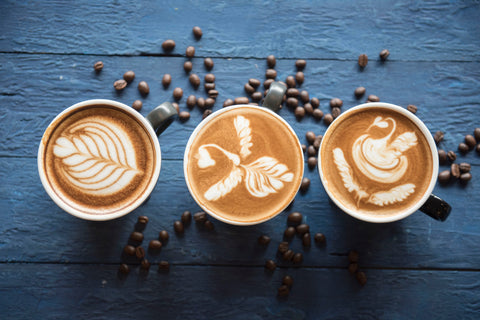
How to Make Barista Style Coffee at Home
Share
While we could all easily use our instant coffee brewers in our own homes, there is something special about the way your local barista whips up your regular java order just the way you like it.
However, sometimes we want the taste and comfort of our hand-crafted coffee drink from the comfort of our own living rooms (while we are still in our pajamas). Though you may have thought it is only possible to have barista-style coffee when you order at your local shop, it is possible to make it yourself at home.
How to Make Café Style Coffee at Home
You know the place-- the cute little café downtown that serves the most delicious coffee. To some, it’s just a simple cup of coffee, but to you it is perfection, and you’d love to make it in your own kitchen.
Freshly Roasted and Freshly Ground
How to make café style coffee at home begins with the right coffee beans. The beans are the literal fundamental elements of your coffee experience, so don’t choose just anything from your local grocery shelf. Once you obtain some great beans, there is still plenty to do in order to reach the beans’ fullest potential!
Using cheaper beans or buying bulk coffee grounds won’t yield a perfect café style cup, no matter how fancy the espresso machine you run them through. Begin with a bag of imported whole bean coffee to give yourself the best foundation.
Ideally, you want beans that have been freshly roasted. The beans will lose their natural flavorings about 3-4 weeks after being roasted, so buy fresh coffee and use it quickly.
In addition to wanting freshly-roasted beans, you’ll also want freshly-ground beans. The most foolproof way to achieve this is to grind the beans yourself. Purchase a quality electric grinder or grind the beans by hand each time you make a cup. This ensures that the flavors remain intact by preventing the chemicals and oils from breaking down before it is time to brew.

The Importance of Filtered Water
What ingredient is coffee mostly made of? Water! Yet for many of us brewing our own confections at home, water receives less attention than any other element of the coffee, including the mug we select to drink it from. Yes, many of us spend more time selecting a coffee mug than we spend considering one of the most important elements for coffee flavor.
Tap water contains a number of harsh minerals and chemicals. While it’s fine to pour yourself a glass to hydrate, using tap water for coffee is like using a dirty old coffee maker: it’ll get the job done, but not in the best way.
Use filtered water; you’ll get a much cleaner and crisper taste from your brew. Have you ever felt like your coffee at home feels a little muddied especially when compared to coffee shop coffee? That’s all about the water quality.
Perfect Espresso Shots and Perfect Brews
If you really want to dive into the science of perfect coffee, there are countless studies exploring water temperatures and brew times.
Load your espresso machine with freshly ground beans and filtered water, then pull your shots. Most espresso machines will do all the work for you. Most café and barista-style coffees require a great shot of espresso, for which you’ll need fresh espresso beans. Buy quality espresso beans like the Havanero Espresso whole beans to get the robust espresso flavor that forms the base of all your coffee shop favorites.
If you’re trying to make a cup of coffee, you have a few different options. You can use the classic coffee pot, a french press, or a pour-over. Coffee pots and pour-overs are the most similar because they both use a special paper filter. The paper filter will remove some of the oils in the coffee as they pass through, giving you a slightly cleaner brew than a french press.
If you use a french press, you’ll get a more complex flavor in your coffee. Try letting the coffee brew about 4 minutes before pouring.
There’s a coffee maker for every lifestyle, and for every at-home barista! However, if you are looking for a more authentic feel, we recommend you stay away from the electric coffee pots and single-serve pod systems, as they will not give you as complex of a brew.
How to Make Barista Style Coffee
Once you’ve perfected the basic cup of coffee and the basic espresso shot, it is time to open up to the world of barista-style coffee.
There isn’t much you can do to learn how to make barista-style coffee at home without having the right tools. Baristas can make those beloved coffee drinks because they have the right coffee equipment. Consider some of these coffee-gear gifts for the coffee lover in your life, whether that’s you or someone else!
There are so many different coffee beverages to make that it’s difficult to determine where to begin. Start with the basics, and branch out slowly as you master different elements. Not sure what distinguishes a cappuccino from a latte? There’s a lot of great charts out there, like this one, which can break down the differences in a simple graphic.
Steaming and Foaming Milk
Outside of the coffee itself, there is nothing as delicious as the milk added to the top! Cappuccinos, lattes, mochas, and cafe au laits all require steamed or foamed milk in some combination. Steam wands are relatively cheap and are an easy way to froth your milk. In fact, if you have an espresso machine, it may have a built-in steam wand.
Cappuccinos have more froth than lattes. They generally are equal-parts espresso, steamed milk, and milk froth. Lattes have more steamed milk and only a small layer of milk froth on top.
The longer you steam your milk, the more froth you’ll get. Cappuccinos generally require the milk to be twice the size it was when it was cold, while lattes only require an increase of about one and a half times the volume of the cold milk.
Adding Chocolate
Mochas and white chocolate mochas have become increasingly popular beverages, but if you’ve ever tried to melt chocolate into your coffee, you know that getting the rich chocolate-coffee flavoring that baristas create is a difficult task.
When making a mocha, use the right ratio of cocoa powder to milk and coffee. Adding melted chocolate or hot chocolate mix will put too much sugar and fat into the coffee and make the chocolate flavoring refuse to blend well with the coffee. Cocoa powder should be used instead, and the unsweetened kind at that. Steam some milk (with minimal froth), and then mix in the cocoa powder, sugar, and coffee.
While you can mix in melted chocolate, especially if crafting a white chocolate mocha, cocoa powder will mix into the coffee more smoothly.

More Variations
Learning how to make barista-style coffee at home requires variation and experimentation so that you can dazzle houseguests and friends with unique creations and your own takes on old classics.
Once you’ve mastered the basics of brewing coffee, pulling quality espresso shots, and steaming milk, you can explore more adventurous coffee confections. Try some summer coffee trends, and explore the world by making local favorites from the many countries that love coffee!
Using non-dairy milks for your barista-style coffee drinks made at home can have huge health benefits. It’s fine to treat yourself to the whole milk when heading to a coffee shop, but if you’re frequently making the drinks at home, whole milk can add up to a lot of extra fat intake and calories! Try non-dairy alternatives for healthier at-home options. Coffee already has a number of health benefits, but using non-dairy milk will only increase these.
If you are feeling really confident, latte art had a huge moment on social media, and while the hype has subsided, you can still try your hand at the foamy designs. To make latte art, the espresso goes first into a bowl-shaped cup, and then half the steamed milk is poured on top of it. The final layer is poured gently and close to the surface so that the milk and espresso base don’t incorporate, creating the white and caramel colored contrast for the art.
Final Thoughts
Consider these ideas in order to begin brewing barista-style coffee at home. You’ll surprise yourself with what you are capable of crafting! As you choose which beans to start with, make sure you are going for authentic, premium beans to produce the best cup of coffee you can make at home.
Good luck with your crafting; we hope your cup is better than your local barista’s!
